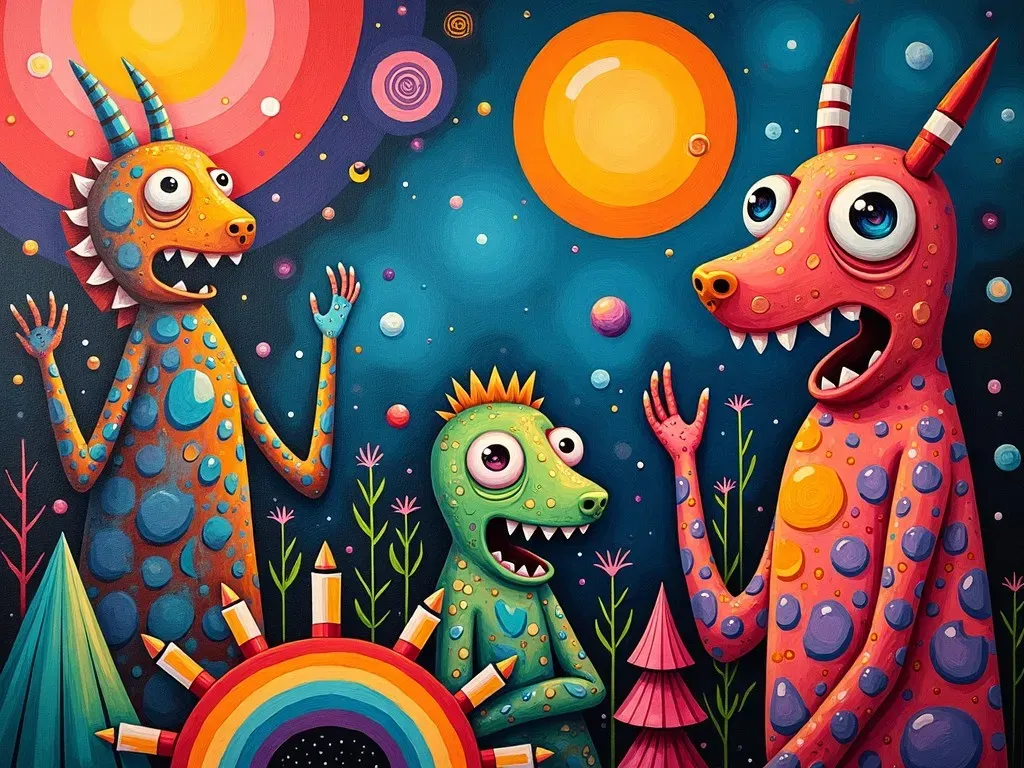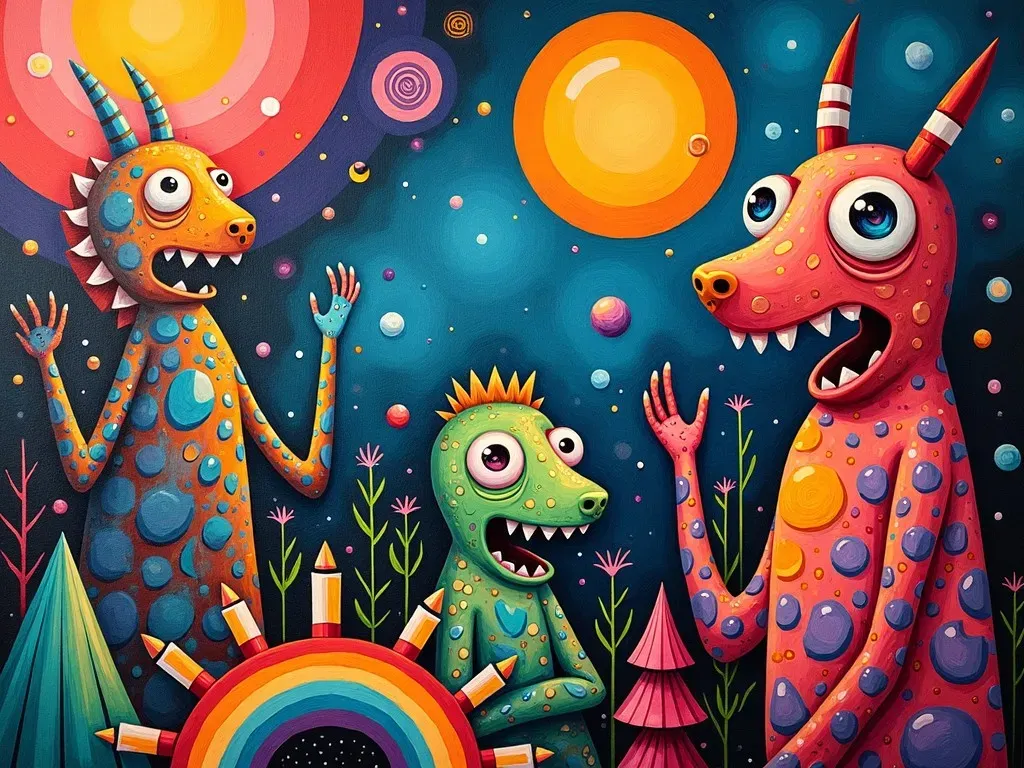Crazy artwork has captivated audiences around the globe, showcasing the eccentricity and creativity that often defies conventional boundaries. From whimsical pieces that make you smile to thought-provoking expressions that challenge societal norms, the realm of crazy and obscure artwork is nothing short of fascinating.
Art in its many forms serves as a reflection of culture, emotion, and individual perspective. What constitutes crazy artwork varies from one viewer to another, creating a unique dialogue around its interpretation. The artistic landscape is dotted with unconventional and avant-garde creations that often leave a lasting impression on those who experience them.
A Glimpse into the World of Crazy Art
Crazy artwork isn’t merely about odd shapes and vibrant colors; instead, it reflects the artist’s inner world and thoughts, pushing the envelope of what is considered aesthetically pleasing. Various art movements have embraced the unusual, and many contemporary artists continue to explore different mediums and formats. Below is an exploration of some notable works and trends that exemplify the essence of crazy artwork.
Notable Crazy Artworks
| Artwork Title | Artist | Year | Description |
|---|---|---|---|
| The Garden of Earthly Delights | Hieronymus Bosch | c. 1505 | A triptych depicting the creation of man, earthly pleasures, and hell. |
| The Melun Diptych | Jean Fouquet | 1452 | A portrayal of the Virgin Mary in a surreal context. |
| Medusa | Caravaggio | c. 1598 | A striking representation of the mythical Gorgon, filled with emotion and drama. |
| Gabrielle d’Estrées and One of Her Sisters | Francois Clouet | 1594 | A portrait that features an unsettling and intriguing sense of intimacy. |

Facts and Figures about Crazy Artwork
- Number of Renowned Museums Worldwide: Over 55,000 museums exist globally, many with collections that feature obscure and crazy artworks.
- Growth in Modern Art Movements: The 21st century has seen a 25% increase in the number of contemporary art galleries and collectives dedicated to exhibiting unique and unconventional art.
- Online Art Communities: Platforms such as DeviantArt, with over 47 million accounts, allow artists to share unusual creations and connect with an audience that appreciates the bizarre.
Exploring Different Mediums in Crazy Artwork
Artists now utilize unconventional materials and methods to create engaging pieces. These can range from digital installations to sculptures made from recycled materials, pushing the boundaries of traditional art forms. Here’s a table summarizing various media used in creating crazy artworks:
| Medium | Description | Notable Artists |
|---|---|---|
| Performance Art | Art that requires the participation of the audience. | Marina Abramović, Yoko Ono |
| Digital Art | Artwork created using digital tools and mediums. | Beeple, Rafael Lozano-Hemmer |
| Found Object Sculpture | Using everyday, discarded materials to create art. | Marcel Duchamp, Robert Rauschenberg |
| Street Art | Large-scale public art that engages with urban environments. | Banksy, Shepard Fairey |
The Role of Crazy Artwork in Society
Crazy artwork has historically functioned as a vehicle for social commentary and critique. Some artists challenge societal norms through intentionally provocative imagery, while others use humor and absurdity to provoke thought. Noteworthy examples include:
- Dada Art Movement: Originating during World War I, Dada artists such as Marcel Duchamp deconstructed traditional art forms and questioned the very notion of art in a chaotic world.
- Anti-Art Movements: These movements have aimed to discard the established values of art, promoting a new philosophy focused on personal expression rather than adherence to conventions.
Lesser-Known Crazy Artwork
Among the eclectic tapestry of crazy artwork, certain pieces have garnered little mainstream attention yet pack a significant punch. Here are a few obscure artworks that exemplify innovation and creativity:
-
One and Three Chairs by Joseph Kosuth – A conceptual work that combines a physical chair, its photograph, and its dictionary definition, challenging perceptions of meaning and representation.
-
Fountain by Marcel Duchamp – A simple urinal presented as art, leading to profound discussions about the essence of art.
-
Infinity Room by Yayoi Kusama – A room filled with mirrors and lights that creates a seemingly endless space, allowing viewers to lose themselves in a surreal experience.
Frequently Asked Questions (FAQs)
What are some prominent themes in crazy artwork?
Themes in crazy artwork often include surrealism, absurdity, identity, social critique, and existentialism. Artists utilize these themes to convey complex ideas or provoke thought in their audiences.
How has the internet impacted the perception of unconventional art?
The rise of social media and online platforms have allowed bizarre and unconventional artworks to reach wider audiences, creating communities that celebrate the strange and unique. Artists can now share their creations with the world, transcending geographic boundaries.
Are there specific art movements known for their ‘crazy’ artwork?
Yes, movements like Dadaism, Surrealism, and even Punk Art have significantly contributed to the development of crazy artwork. Each movement has brought forth its interpretation of absurdity, challenging traditional aesthetics and concepts of art.
How do institutions curate crazy artwork?
Museums and galleries often have curators who specialize in contemporary and modern art. These curators evaluate artworks based on their innovation, relevance, and ability to provoke discussion, making decisions based on a blend of personal taste and societal impact.
Where can I find more about obscure artworks?
For those interested in exploring weird and obscure artworks in-depth, refer to Art In Context, which provides insightful discussions and analyses of these unique pieces.
In the dynamic world of art, crazy artwork resides as a significant testament to human creativity, freedom of expression, and the ability to challenge the norm. Each piece invites us to see the world through a different lens, one that is often strange yet profoundly beautiful.
